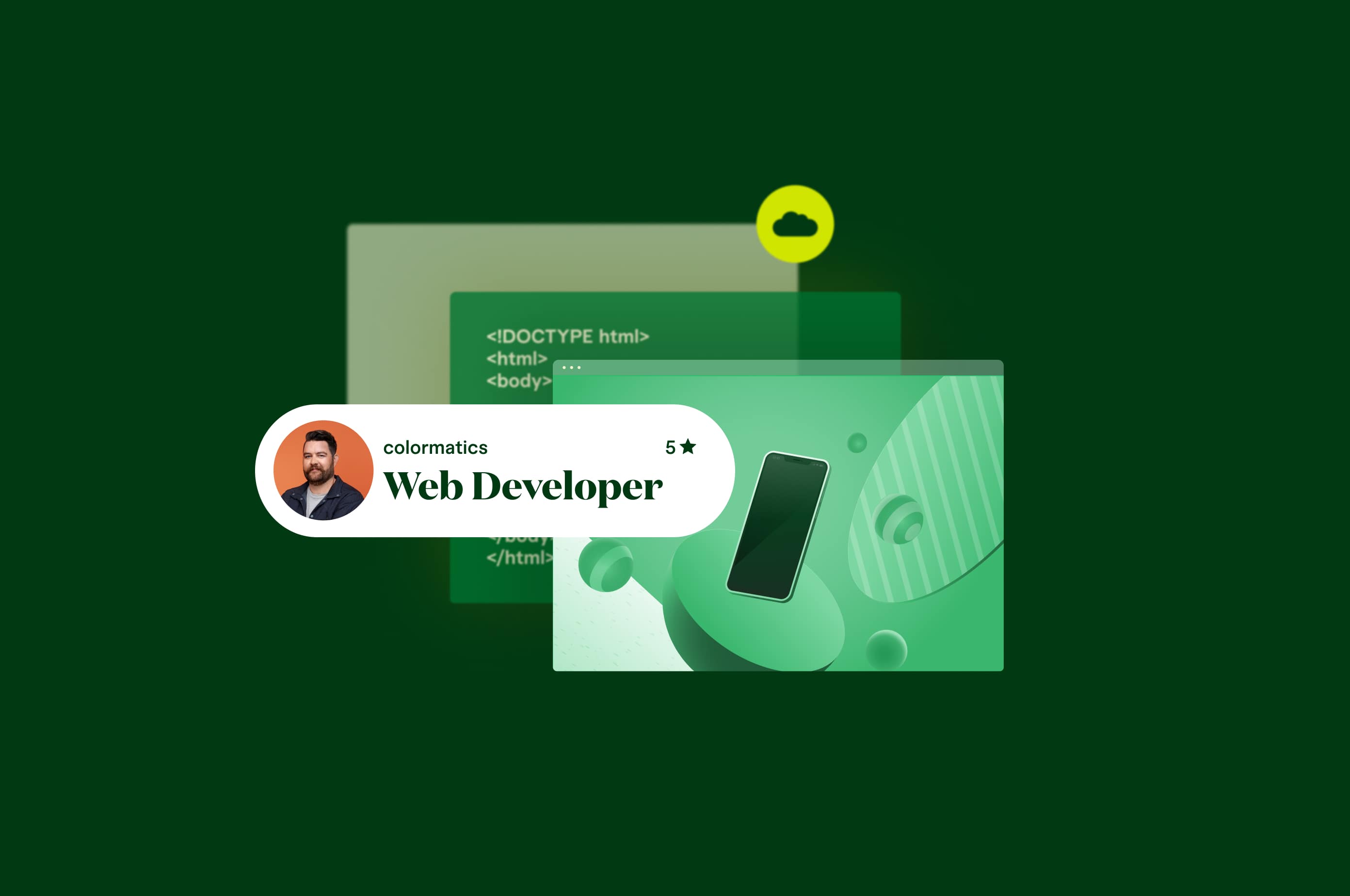15 React Libraries to Speed Up Business App Development in 2024
With beautiful user interfaces and exquisite business dashboards, these React libraries will get your team through its projects a lot faster.
 September 27, 2023
September 27, 2023 11 minute reading
11 minute reading
React.js is second only to Node.js as the most used JavaScript framework in the world and the most popular front-end framework. But React.js and Node.js often are used in combination to create APIs or enable server-side rendering.
React’s popularity has led to the creation of many open-source React libraries that can be used to develop web applications faster.
Building user interfaces from scratch in React can be tedious and time-consuming. Many popular React libraries provide ready-made React components that free you from hand-crafting the necessary HTML, CSS, and accessibility features to ensure your web app has an excellent user experience.
But the deluge of choices can make finding a suitable React library for your business case challenging. So, we’ve chosen 15 awesome React libraries your business can use to speed up your React development time and improve your website app’s overall experience.
1. Next UI

Next UI is a powerful React UI library that lets you create beautiful interfaces with zero design experience. It is themeable, fast, and designed so developers can get started without a huge learning curve.
The library integrates beautifully with Tailwind CSS, a utility-first CSS framework, to make it easy to create themes or customize Next UI’s default theme.
It’s also fully accessible. Next UI components follow WAI-ARIA (Web Accessibility Initiative-Accessible Rich Internet Applications) guidelines, providing keyboard support and simple focus management.
Despite the name, Next UI has no connection with Next.js, but you can still use Next UI with Next.js.
2. Material UI (MUI)

Google created the Material UI React library so users could implement its Material Design principles into their apps. MUI’s GitHub project has more than 88,000 stars, making it the most popular React library project on the platform, and it receives four million downloads every week on npm.
Whether you’re aiming for a distinctly Google feel for your apps or want to work with a robust design system that lets you do more in less time, MUI enables you to do it easily.
Developers familiar with styled components can use MUI’s styled() utility to easily create styled components from within MUI.
3. Semantic UI React

If your business already uses Semantic UI, using its React library in your React applications makes sense.
If you’re new to web development, Semantic UI might be appealing because of its human-friendly approach to design. The Semantic team created all its HTML, CSS, and JavaScript keywords semantically so that writing code feels more like writing human language.
Semantic UI React is entirely free of jQuery, which can sometimes cause conflicts with React because of each library’s unique approach to manipulating the DOM (Document Object Model).
4. Create React App

Create React App is a command-line interface (CLI) tool created by Facebook to make it easy to generate the basic boilerplate code and file structure for a new React application. Create React App takes care of all project dependencies and build-tool configurations so you can focus on your code.
If you ever want to use a different build configuration than what Create React App provides, you can “eject” from Create React App and edit the configuration files yourself.
5. React Hook Form

This powerful minimalist library lets developers perform form validation easily using React hooks. It also has the added benefit of working with both React Native and React.js.
React Hook Form’s library uses TypeScript, which has become the language of choice over JavaScript for enterprise-grade web applications.
The library has zero dependencies and integrates smoothly with other React UI component libraries, or state management libraries, such as Redux or Mobx.
React Hook Form’s website also has a fantastic drag-and-drop form creator that helps you generate your app’s form and validation code.
React Hook Form is an essential part of any React website launch checklist.
6. Redux

Redux isn’t React-specific. It’s a state management library that can also be used in non-React JavaScript applications, such as Vue or Angular.
React has native support for basic state management, but things get messy for larger applications. Redux lets you manage state across components by implementing a central store.
Find a freelance programmer for hire
7. Ant Design (AntD)

Ant Design is another big hitter in the field of design and layouts for React projects. It has almost as many GitHub stars (87,000) as Google’s Material UI project and receives more than 1.2 million weekly downloads on npm.
Ant Design is excellent for building enterprise-grade solutions, featuring more than 50 pre-built React components for your project, including components for:
Buttons
Typography
Layouts
Navigation
Data entry
Data display
Feedback
AntD is built using TypeScript and has internationalization support in nearly 70 languages.
The free version consists only of the react components, and Ant Design Pro includes the complete supporting scaffolding for these components, including enterprise-grade template components.
8. React Bootstrap

The team behind Bootstrap, the most popular front-end framework, rebuilt it completely to remove all Bootstrap-specific JavaScript and make it compatible with React. Each Bootstrap element is now a React component. The library also did away with jQuery.
React Bootstrap provides a rich set of React components that Bootstrap developers will feel completely at home with, including the popular card and carousel elements.
The Bootstrap team did an excellent job of ensuring compatibility, so React Bootstrap is fully compatible with existing Bootstrap themes, provided those themes don’t extend Bootstrap’s JavaScript functionality.
If you run into incompatible JavaScript theming issues, you can find freelance bug-fixing services on Fiverr to help.
9. Grommet

Grommet is a power-packed modular design system for React apps, letting you easily integrate responsiveness and accessibility into your web apps.
One spectacular feature this React framework provides is a WYSIWYG editor to create your user interface. When you’re done, the editor generates the React code for you to copy and paste into your app.
Grommet comes pre-packaged with plenty of themes, and you can even create your own Grommet theme using its online editor.
If you’re just starting out with React, Grommet takes care of a lot of the underlying plumbing, so you can get busy coding.
10. Chakra UI

Chakra UI is another powerful React UI framework with extensive ready-made components. It also has a Figma plug-in to generate Chakra code directly from your Figma designs.
Chakra offers more flexibility than Material UI, which can become cumbersome when changing a component’s default styles. If you’re looking for more developer flexibility in your app, Chakra might be the right choice for you.
Chakra also offers light and dark modes, and support for transition animations. The components are built following WAI-ARIA principles for accessibility.
11. React Router

React Router is the de facto standard for implementing client-side routing in a React app. Unlike traditional websites, where requests for a new page must do a round-trip to and from the server, React Router lets you implement browser navigation in the client, making your website extremely fast.
Microsoft, Twitter, and Airbnb have all used React Router in their projects.
The library matches your app’s React components to the current route so the browser can render them on the page.
If you’re developing a single-page web application (SPWA), React Router is an essential tool to use.
12. Onsen UI

Onsen is a JavaScript library that works with Vue, Angular, Angular.js, and React. Onsen’s unique offering is that it renders webpages in a way that simulates the device’s native look and feel.
One of the drawbacks of building a website app is that it typically doesn’t have a native feel to it, meaning it looks the same regardless of whether you view the web app on an iOS or an Android device. That’s because web apps are essentially webpages. This wouldn’t be a significant problem, but it starts to affect the user experience when they install the web app as a progressive web app, where the browser bar is missing and the app’s container looks like a native app.
Progressive web apps run in the browser but without the browser address bar or menu items. Their interfaces are designed using HTML, CSS, and JavaScript and don’t adapt according to the operating system they’re running on.
Onsen UI is a powerful cross-platform UI development library that renders webpages to match the look and feel of the native components of a given device. For example, the above screenshot shows an Onsen UI page from an iOS device. When we toggle the view to Android, the interface looks like a local Android app:

Onsen UI is an indispensable library for companies that want to emulate a native-app feel when building a business website because the site will render according to the device that’s accessing it.
For genuine native apps, however, you must create an installable cross-platform app. You can do this using React Native, which has similarities to React but isn’t the same toolkit. If developing a native app is beyond your team’s skill set, you can find freelance mobile app development services on Fiverr to help you.
13. React-admin

React-admin is a React framework specifically for B2B use cases, offering a wide range of components that facilitate creating internal business logic tools. React-admin makes it easy for developers to build powerful back-end tools for CRMs, ecommerce sites, and help desks.
React-admin apps are API-based, making them back-end agnostic. Using adapters, React can easily communicate with APIs that follow the GraphQL or REST syntax. You can also find freelance API programming services on Fiverr to help you connect React to external APIs.
The library provides an extensive array of components that let you create forms and perform validation on them, handle routing and notifications, and create full-fledged data grids for reading and displaying data.
It also provides an extensive tutorial on its website that walks you through all the major concepts necessary to build full-scale react apps.
Find a mobile app developer for hire
14. React-pdf

React-pdf is a simple library that lets React developers add PDF functionality to their business’s app. It’s effortless to use: You generate the PDF using React components and then render it as a saved file, a stream, or in the DOM. The library also lets you generate SVG images.
15. Core UI

Core UI is an enterprise-grade collection of UI components and templates for quickly building business dashboards. It’s based on Bootstrap 5 and is fully compatible with Bootstrap. The team also has libraries for Angular, Vue, and Bootstrap.
The themes are incredibly professional and let React developers focus on business logic instead of wasting time on the interface.

Tips from a pro about using React libraries
React libraries can greatly reduce a web development project’s timeline, but it’s essential not to go overboard with them.
“Integrating the right React libraries can significantly speed up the development process,” says Elise Bentley, VP of marketing for Tiugo Technologies, the parent company for CKEditor, TinyMCE, and ButterCMS. “By using well-established libraries, developers can leverage pre-built components and functionalities, reducing the need for reinventing the wheel.”
Using too many libraries that aren’t essential to the project, however, can complicate the project, making it more challenging to maintain your website.
Bentley suggests considering three major elements for choosing a React library:
Dependency management: “Pay attention to the other tools that the library needs to work properly and if they might cause issues with other parts of your website.”
Performance impact: “Some libraries could make your website slower if they add too much extra work.”
Community support: “Choose libraries that have a large number of users and support. If a library is not well-supported or gets abandoned, it could cause issues in the future.”
If you need help evaluating which react libraries you should use in your project, you can find freelancer JavaScript programming services on Fiverr to help you.
Get help from Fiverr freelancers in your React project
If you need help improving your business’s React app, you can find the freelance services you need on Fiverr.
Fiverr is an online marketplace of freelance professionals skilled in web development, JavaScript programming, design, desktop programming, and React development.
The platform ranks freelancers according to how many successful projects they’ve completed and on the their reviews.
A category of professionals called Fiverr Pro also exists. In this category, Fiverr hand-vets the sellers to ensure they have professional skills in the field they’re offering services for.
Regardless of the seller level or pro designation, Fiverr’s Customer Safety and Quality team protects you throughout your purchasing journey to ensure an excellent experience.
To get started, open an account on Fiverr and search for the service you need, or browse the categories to find the right professional for your job.



